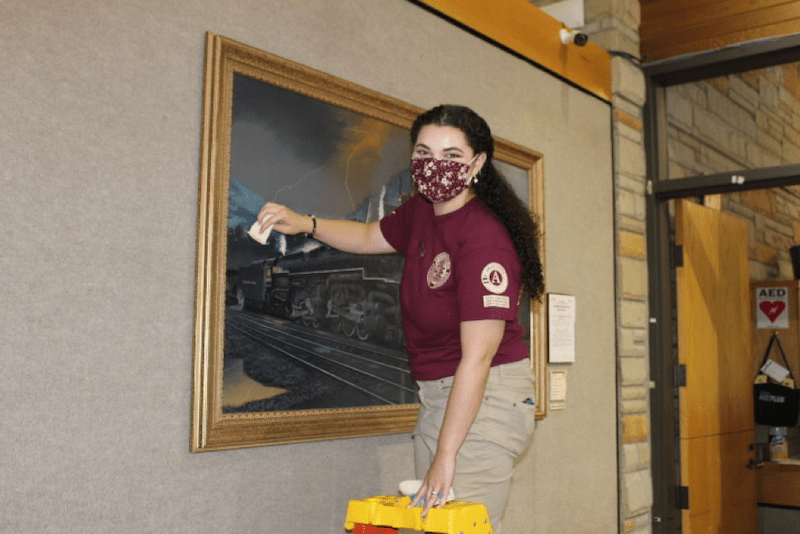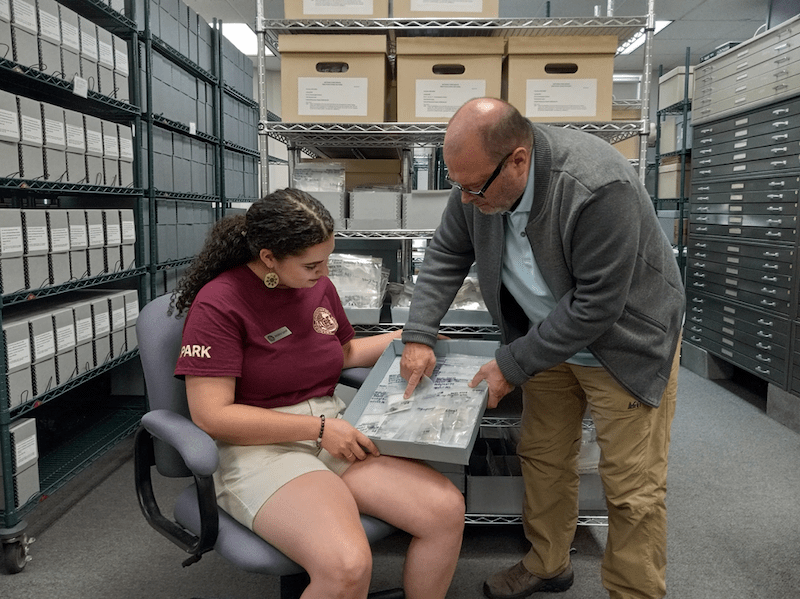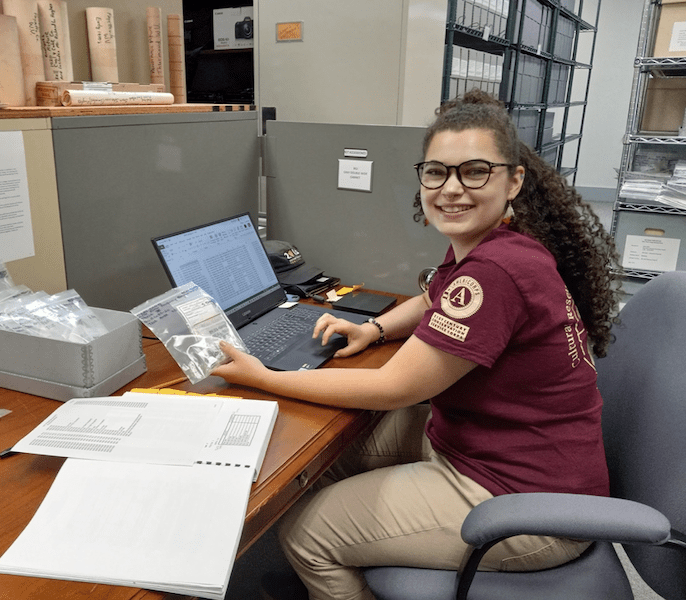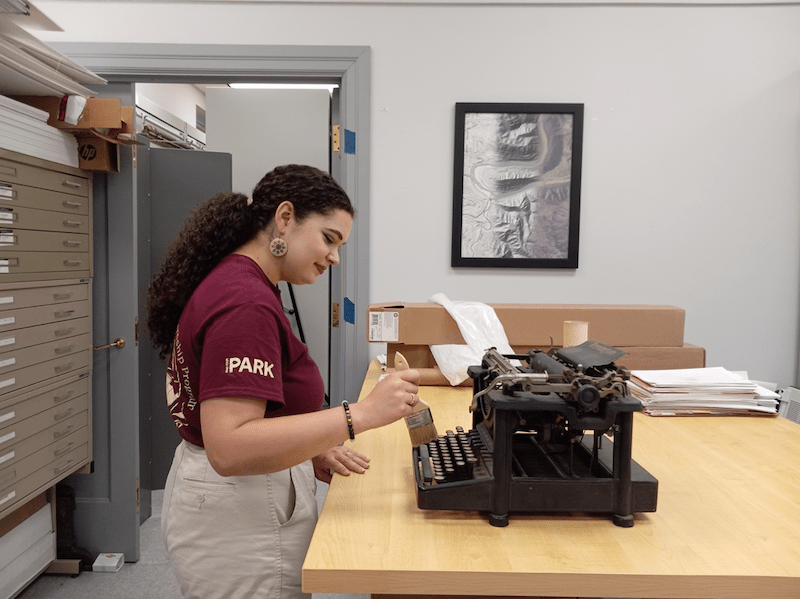What does a Cultural Resources Specialist Do?
Written by: Jessica Lynch

Hi there! My name is Jessica, I am 21 years old, and I am going to give you the inside scoop on what a Cultural Resources Specialist in the National Park Service does on the daily.
Firstly, Cultural Resources encapsulates a lot of professions within the Park Service. Knowledge about interpretation, museum collections, and archaeology is vital.
Due to the nature of this varied position, my tasks from moment to moment vary widely from cleaning objects, putting data into the Interior Collection Management System, assessing the conditions of archeological sites in the field, and creating videos explaining the importance of Cultural Resources for the public.

This summer, I am working in collaboration with ACE and New River Gorge National Park, the newest National Park in the country. I mainly work with museum collections, which many people do not know even exists within the Park Service. The objects you see on display in visitor centers are only a small fraction of the resources that Parks work to preserve, interpret, and protect from deterioration. According to the NPS, Museum Collections refers to the “group of artifacts (including archives) and/or scientific specimens that are relevant to the park’s mission, mandates, history, and themes, and which the park manages, preserves, and makes available for access (through research, exhibits, and other media) for the public benefit.”

In order to track the condition of objects with the Museum Collections, I record information about each and every object in storage, including a description, size measurements, where it can be found within the Collections, and any signs of deterioration. This information allows museum curators and museum technicians to locate objects when they are needed for research in addition to tracking how the object reacts to the temperature, light, and other environmental factors. It is a lengthy process to ensure that objects are clean and sufficiently documented, but thankfully the Cultural Resources division exists to highlight the valuable items that can show us how life was experienced in the past.

Did you know that the paper in your printer contains an organic compound called lignin that is harmful to historic resources? Utilizing archival paper to house and store objects is just one facet of conservation efforts that occur within Museum Collections. An unassuming spot of mold or layer of rust can progress into a disaster that makes objects too damaged to read or function. Cleaning objects with archivally safe materials is an important part of my day that ensures such resources can be utilized for generations to come.
As someone new to the professional world and operating procedures of the National Park Service, it is my personal goal to extend my work to be more accessible to the public, whether it be through education or research, the materials I work with on a daily basis belong to all of us. Making more digital content and programming to inform the public about the duties of the cultural resource division will spread its mission and open more doors for people to use the resources within collections. Next time you visit a National Park, think about the work that went into acquiring, cleaning, and documenting the items on display and smile knowing that Cultural Resource professionals have your back when it comes to protecting the relics of our past.

hi my name is david i want to work in this sort of feld